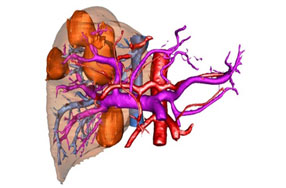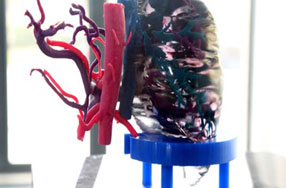Digital medicine is a kind of subject applying modern digital technology to explain medical phenomenon, to solve medical problems, to explore the medical mechanism and to improve the life quality. It refers to the relevant research, popularization and application of information technology in whole medical field, which makes it an interdiscipline between information technology and mechanical technology. The core of digital medical is to apply digital technology to improve the clinical diagnosis and treatment.
It is generally recognized that the term “Digital medicine” was initially put forward by prof. Warner V. Slack, a professor in medical school of The Harvard University, in his monograph named “Cyber Medicine: How Computing Empowers Doctors And Patients For Better Health Care”. The concept of digital medicine could be general or special. On the general aspect, it includes relevant research, development and application of digital medical equipment, development and implement of medical management information system and clinical information system, construction and management of digital hospital, digitization of clinical medical technology, regional medical cooperation and information sharing, remote medical consultation and remote medical education, application of digital technology in various branches of basic medicine, digitization of disease prevention and control and public health management, etc. On the special aspect, it means the research and application of digital medical technology, i.e. full use of computer science and digital technology in exploration and creation in area of clinical medicine. It includes aiding the implement of original medical technology and providing novel digital medical technology, which is beneficial to the improvement of more accuracy and reliable diagnose and therapy. The high-tech equipment related to digitization and digital management system account for higher proportion in modern hospital recently. A lot of valuable exploration have been carried out in the fields of telemedicine, surgical navigation, virtual reality and digital hospital management, etc. Digital medicine has achieved rapid development in the field of Image area and is also widely adopted to the fields of medical administration, daily reporting, monitoring food and drugs hazardous to health. Digital medicine that we usually mention, mainly refers to the special concept.
Digital medicine is a new type of modern medical mode, which applies modern computer technology and information technology to the whole medical process. Appearance of digital medical equipment enriches the connotation and capacity of medical information significantly. More specifically, the medical information has developed from 1D visual electrophysiological information such as ECG and EEG to 2D medical image information (for example, CT, MRI, ultrasound, digital X-ray machine (DR)) and thus to the 3D visualization and even to 4D information, such as the real-time dynamic display of the 3D heart.
The Nobel Prize has been awarded to the scientists in the field of digital medicine many times in modern times, which reflects the great contribution of digital medicine to human being. Nobel Prize in medicine/ physiology was awarded to Alan Macleod Comko and Godfrey Newbold Hainsford in 1979 for the invention of computer tomography (CT). Swiss physical chemist Ernst got the Nobel Prize in chemistry due to his outstanding contribution to the development of high resolution nuclear magnetic resonance spectroscopy. The Nobel Prize in physiology/medicine was awarded to the American scientist Slaughter burr and British scientist Mansfield in 2003 for their breakthrough in magnetic resonance imaging. Development of these modern imaging equipment and image technology enrich the doctor's diagnosis technology greatly, which brings medicine into a new era of visual information. Digital medical technology deriving from CT and magnetic resonance imaging develops quickly In Europe, United States and Japan, and is applied to the field of clinical medicine broadly.



